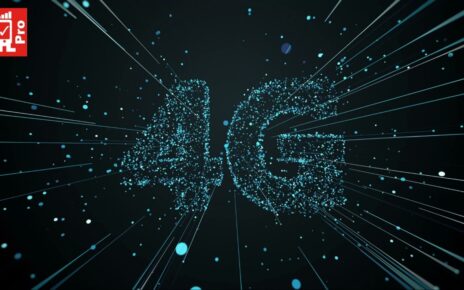The landscape of gaming and entertainment has undergone a remarkable transformation in recent years, thanks to the rapid advancements in technology. One of the most significant catalysts in this evolution has been the advent of fourth-generation cellular networks, commonly known as 4G. With its high-speed data transmission and widespread accessibility, 4G has played a pivotal role in propelling the rise of mobile gaming and e-sports, reshaping the way people engage with digital entertainment. So, now let us see the role of 4G in the rise of mobile gaming and E-Sports along with User-friendly 5g tester, 5G test equipment, 5g network tester tools and User-friendly 4G Testing RF drive test software, Cellular LTE RF drive test tools & equipment in detail.
Unleashing Connectivity
4G technology brought about a paradigm shift in the way people connect to the internet. Its faster and more reliable data speeds shattered the constraints of traditional mobile networks, enabling seamless online experiences for users worldwide. The reduced latency and improved bandwidth of 4G opened the doors to real-time multiplayer gaming, a fundamental requirement for e-sports.
E-sports Evolution
E-sports, or competitive video gaming, has surged in popularity, transitioning from niche communities to global phenomena. The availability of high-speed 4G networks has been instrumental in this growth. Players can now engage in real-time battles with opponents from different corners of the world, replicating the intensity of traditional sports competitions. Furthermore, 4G-enabled live streaming platforms have allowed e-sports enthusiasts to spectate and engage with their favorite players and teams, transforming gaming into a spectator sport akin to traditional athletics.
The ubiquity of Mobile Gaming
Mobile gaming has experienced a revolutionary makeover, with 4G acting as a catalyst for its meteoric rise. The ubiquity of smartphones, coupled with the accessibility provided by 4G networks, has turned mobile devices into portable gaming consoles. Gamers can now indulge in immersive experiences without being tethered to a physical location, heralding a new era of on-the-go gaming. From casual puzzles to graphically intensive multiplayer games, 4G has democratized access to an extensive library of entertainment options.
Social Gaming and Connectivity
4G has redefined social gaming, fostering a sense of connectivity among players regardless of geographical boundaries. The integration of social features within mobile games has enabled players to compete and cooperate with friends and strangers alike. This social interaction has transformed gaming from a solitary activity into a communal experience, further fueling the growth of the industry. 4G’s high-speed data transfer has facilitated the seamless integration of these social elements, enhancing the overall gaming experience.
Challenges and Future Prospects
While 4G has undeniably contributed to the expansion of mobile gaming and e-sports, it is essential to acknowledge the challenges that come with it. Network congestion, occasional latency, and limitations in rural areas have posed hurdles to the seamless gaming experience. However, as technology advances, these issues are being addressed, with the impending rollout of 5G networks promising even greater improvements in speed and connectivity.
Conclusion
The ascent of mobile gaming and e-sports owes a substantial debt to the advent of 4G technology. With its high-speed data transmission, reduced latency, and widespread accessibility, 4G has laid the foundation for the global phenomenon of competitive gaming and entertainment. As the world continues to embrace newer, faster networks, the future of mobile gaming and e-sports shines brightly, promising an even more connected and immersive digital entertainment landscape – for such requirements, network testing is a must. RantCell is one of the reliable mobile-phone based applications that you can install in your Android or iOS phone to perform the tests on 5G/4G coverages. RantCell is developed in such a way that supports various use cases such as RF drive test, cell tower QoE monitoring for degradations, field test measurements, and crowd sourced input about Quality of Experience on mobile network. It (RantCell tool, a non-traditional method) is not only easy to operate but also provides results in real time.





